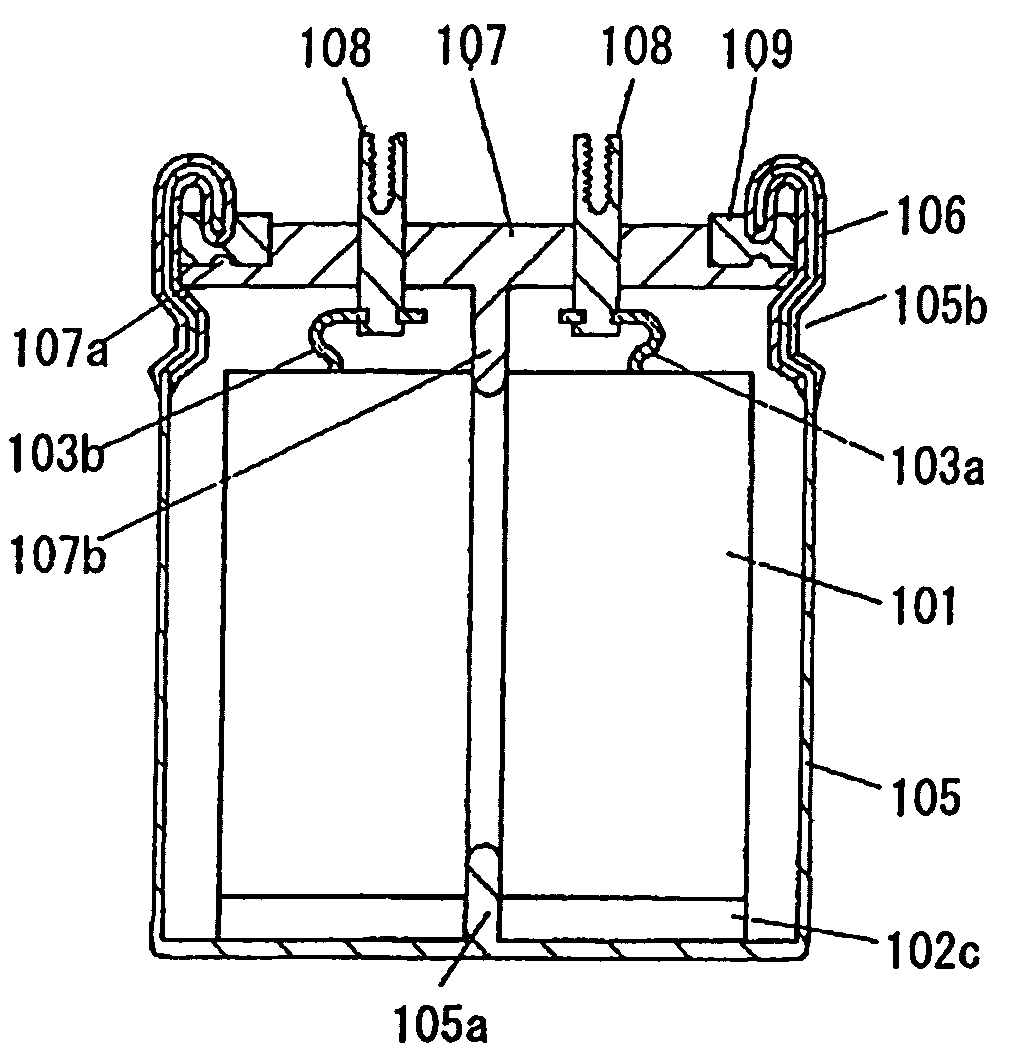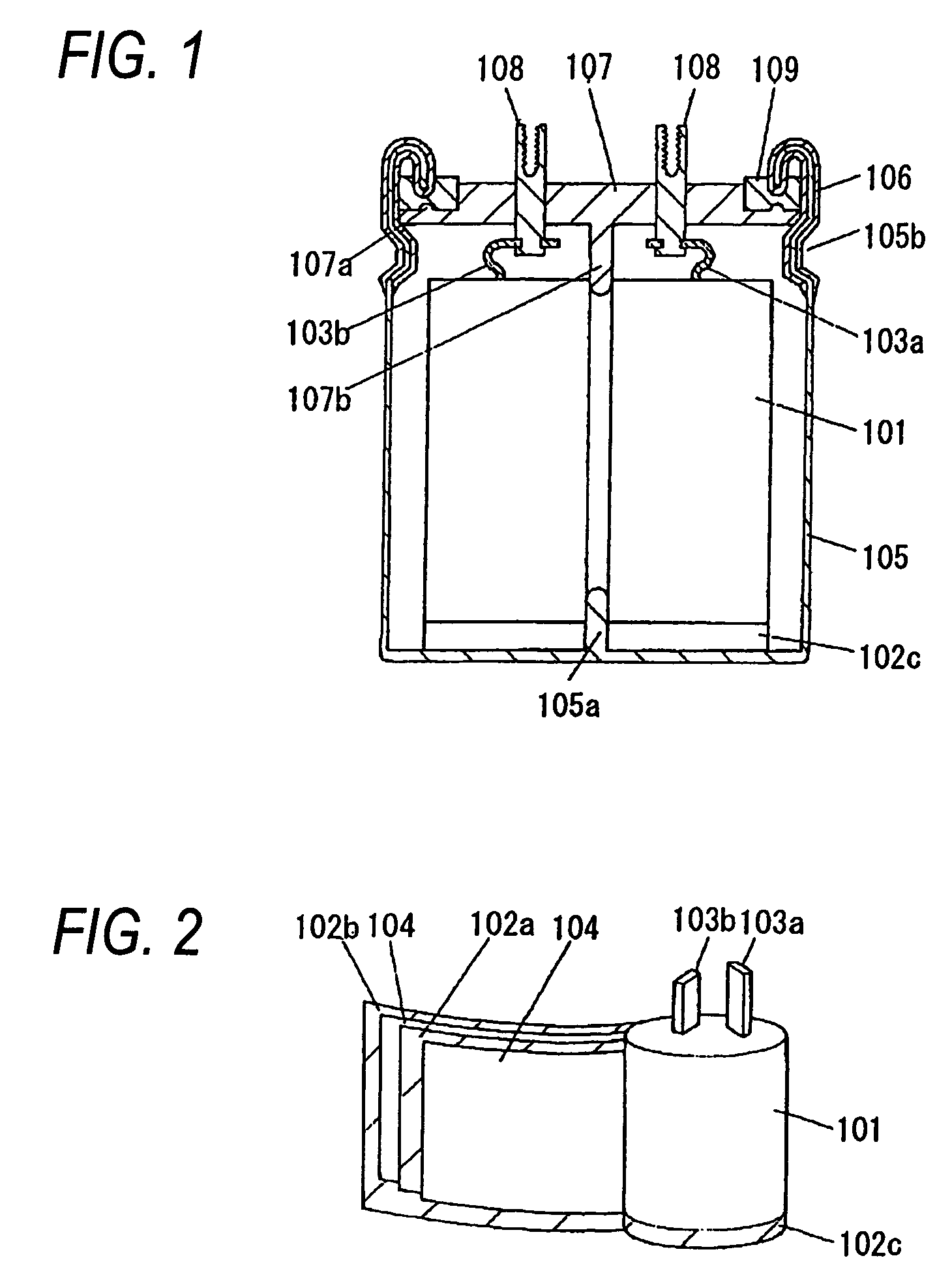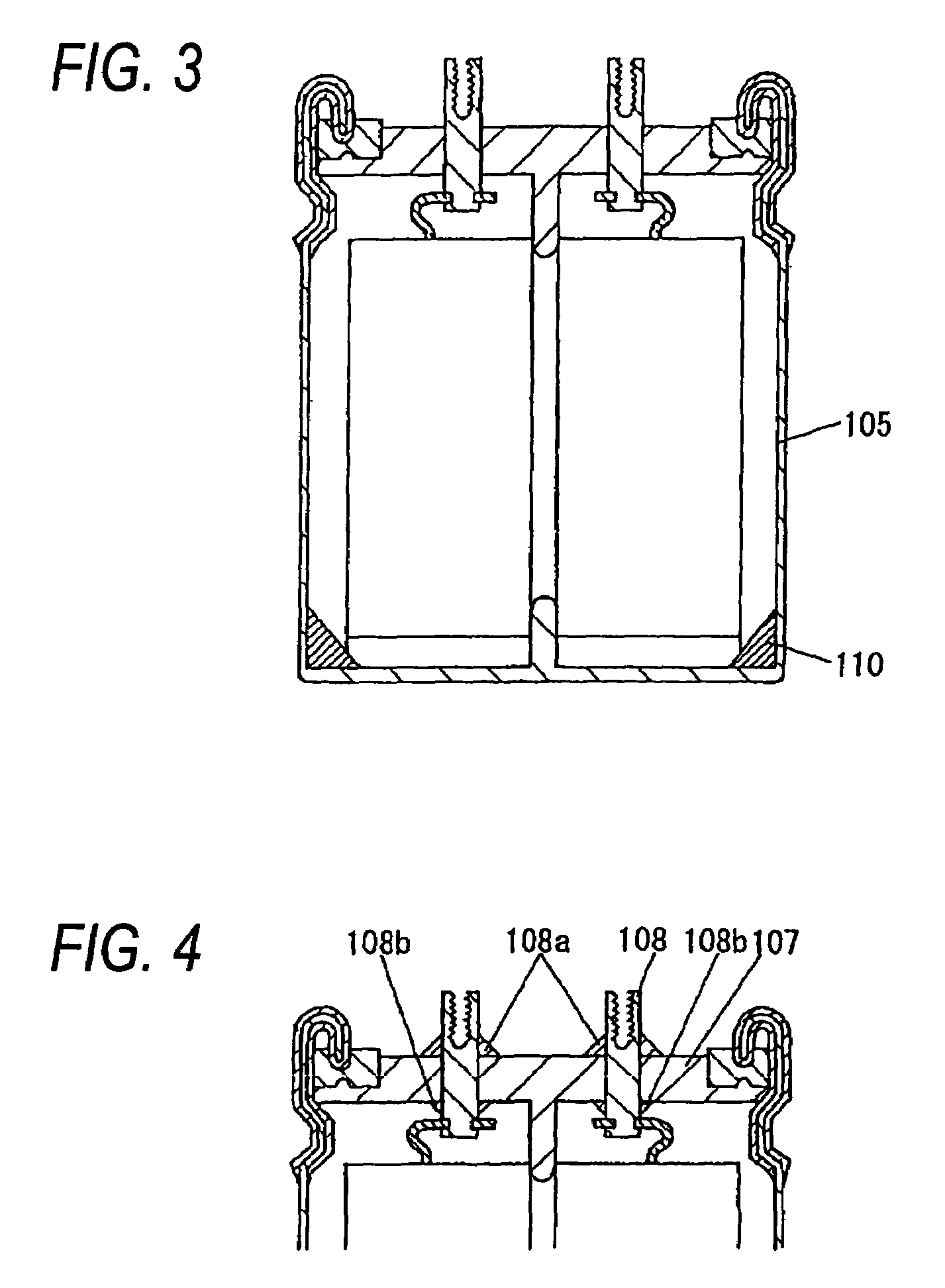Capacitor and method of connecting the same
a technology of capacitors and connectors, applied in the field of capacitors, can solve the problems of shortening the life of capacitors and incurred circuit malfunctions, and achieve the effects of promoting the deterioration of rubber-like elastic members, enhancing the sealing effect, and sufficient thickness
- Summary
- Abstract
- Description
- Claims
- Application Information
AI Technical Summary
Benefits of technology
Problems solved by technology
Method used
Image
Examples
first embodiment
[0076]FIG. 1 is a cross-sectional view showing the construction of a first embodiment of a capacity of the invention, and FIG. 2 is a developed, perspective view of a capacitor element employed in this capacitor. In FIG. 1, reference numeral 101 denotes the capacitor element, and as shown in FIG. 2, this capacitor element 101 is obtained by connecting lead-out leads 103a and 103b respectively to a pair of electrodes 102a and 102b and then by winding these electrodes into a roll with separators 4 interposed therebetween in such a manner that one end surface 102c of one electrode 102b projects. Polarizable electrodes, each composed of a mixture comprising at least activated carbon, a binding agent and an electrically-conducting agent, are formed at the pair of electrodes 102a and 102b, respectively.
[0077]Reference numeral 105 denotes a tubular metallic casing with a closed bottom, and reference numeral 106 denotes an electrically-insulating layer formed on the metallic casing to cover...
second embodiment
[0089]FIG. 5 is a cross-sectional view showing the construction of a second embodiment of a capacity of the invention, and FIGS. 6(a) and 6(b) are a developed, perspective view and a perspective view respectively of a capacitor element employed in this capacitor. In FIG. 5, reference numeral 111 denotes the capacitor element, and in this capacitor element 111, polarizable electrode layers 113a and 113b, each composed of a mixture comprising at least activated carbon, a binding agent and an electrically-conducting agent, are formed in such a manner that electrode end surfaces 112a and 112b of a pair of electrodes 112 project in opposite directions, respectively as shown in FIG. 6(a). The pair of electrodes 112 are wound into a roll, with separators 114 interposed therebetween, and by doing so, the capacitor element 111 as shown in FIG. 6(b) can be obtained.
[0090]Reference numerals 115a and 115b denote lead-out leads connected respectively to upper and lower flat surface portions of t...
third embodiment
[0097]FIG. 7 is a cross-sectional view showing the construction of a third embodiment of a capacitor of the invention, and this embodiment is similar in construction to the second embodiment except that an electrically-insulating plate 121 is provided between the lead-out leads 115a and 115b of the second embodiment.
[0098]With this construction, the short-circuiting between the lead-out leads 115a and 115b due to mechanical vibration is prevented, so that the capacitor of excellent insulating properties can be obtained.
[0099]As shown in FIG. 8, a hole 122 for the passage of the projection 117b of the opening-sealing plate 117 therethrough is formed through a central portion of this electrically-insulating plate, and also a communication hole 123 for pouring a drive electrolyte is formed through the electrically-insulating plate. By doing so, the capacitor element 111 can be more positively fixed, and also the lead-out leads 115a and 115b can be fixed.
[0100]By applying an insulating ...
PUM
 Login to View More
Login to View More Abstract
Description
Claims
Application Information
 Login to View More
Login to View More - R&D
- Intellectual Property
- Life Sciences
- Materials
- Tech Scout
- Unparalleled Data Quality
- Higher Quality Content
- 60% Fewer Hallucinations
Browse by: Latest US Patents, China's latest patents, Technical Efficacy Thesaurus, Application Domain, Technology Topic, Popular Technical Reports.
© 2025 PatSnap. All rights reserved.Legal|Privacy policy|Modern Slavery Act Transparency Statement|Sitemap|About US| Contact US: help@patsnap.com



